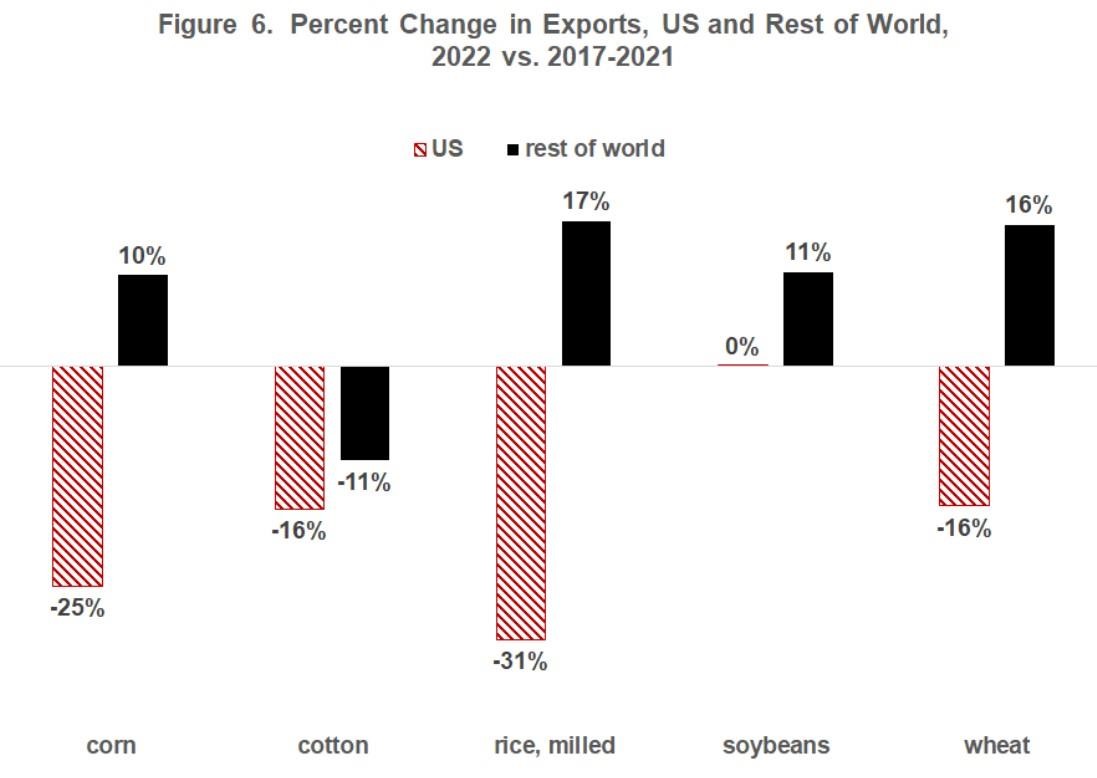Nflation And The War In Ukraine Will Likely Affect Both Sides Of The Cotton Market.
The cotton market has been shaken by major global events for the past couple of years. The invasion of Ukraine is just the latest in the series in a list including the trade dispute, COVID-19, unprecedented macroeconomic volatility, inflation, and the shipping crisis. Despite these challenges, cotton prices climbed to the highest values in a decade and remain high by historical terms. Uncertainty dominates the U.S. cotton market, however, and it remains to be seen how long it will hang onto these gains as the global environment evolves.
USDA Outlook
On February 24, the USDA released preliminary estimates for the upcoming 2022/23 crop year (starting August 2022 and ending July 2023). It projected that higher cotton prices in recent months would cause global production to rise to 120.2 million bales (+3.2% year-over-year). With forecasts for global economic growth calling for above-average growth in 2022 and 2023, the USDA suggested that global mill-use could rise slightly in 2022/23 (+1.7% to 126.5 million bales).
The net result is that they project a slight production shortfall, with 2.6 million more bales expected to be used than grown. Production shortfalls usually result in higher prices. However, the reserve of global cotton stocks that resulted from COVID-19 disruptions, and the level of stocks predicted to be in storage (81.7 million bales representing 65% of global mill-use) at the end of 2022/23 is still high relative to historical averages.
NY/ICE Cotton Futures Since 2020

Source: Cotlook
Uncertain Demand Amidst Inflation and the War in Ukraine
Uncertainty prompted by concern over the war in Ukraine might shift consumer spending away from discretionary items (including clothing) and pull down cotton demand further. Rising prices on essential goods and services, particularly the surge in energy prices and inflated prices for food, may decrease consumers’ discretionary incomes. As a category, clothing falls between need and want, but price increases for more essential items could depress cotton demand. Higher interest rates, which the government uses to combat inflation, could also stifle economic growth and drag down cotton use.
Higher Prices in Other Commodities Might Shift Acreage and Cotton Supply
From the supply side, the war in Ukraine has already changed the calculus surrounding planting decisions. While cotton was increasingly attractive in the first two months of the year, the invasion of Ukraine brought on sharp increases in wheat prices and strong gains in prices for corn and soybeans. Growers still have a few months to adjust their planting decisions, but the latest developments in crop prices may shift acreage out of cotton to more profitable commodities.
A survey conducted by the National Cotton Council (NCC) at the end of 2021 suggests that U.S. growers would plant 12 million acres this spring, an increase of 7% over last year. The USDA predicted that U.S. growers would plant 12.7 million acres, a 13% increase. Even in the context of recent global events, more U.S. acreage seems likely, though as these predictions demonstrate, the size of the bump remains in question.
Even after the planting season, questions will remain about acreage harvested and yield. West Texas is home to about one-third of U.S. planted acreage, and the region receives little rainfall. Cotton is drought-tolerant, but if the current drought in West Texas does not lift, it may cause planted acres to be abandoned ahead of harvest. In addition, like consumers, cotton growers are grappling with inflation. Higher prices for inputs may lead to lower applications, and lower applications could impact yield. Assuming average yields and abandonment, the USDA indicated that the U.S. could collect 18.2 million bales in the 2022/23 crop year. Relative crop prices, input costs, and the weather may produce a different volume, but the preliminary forecast suggests an increase of 3%.
Click here to see more...